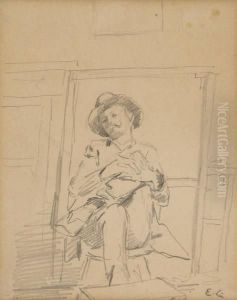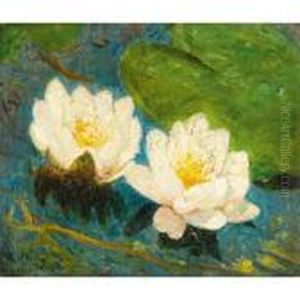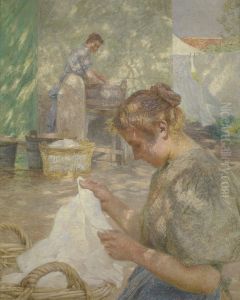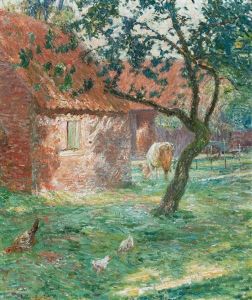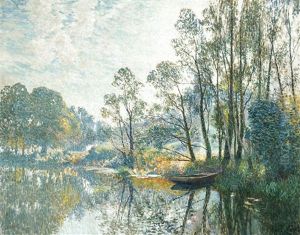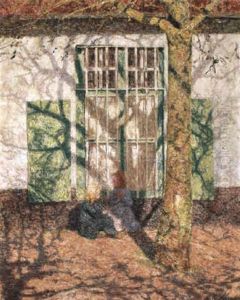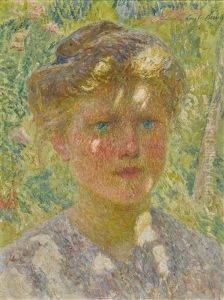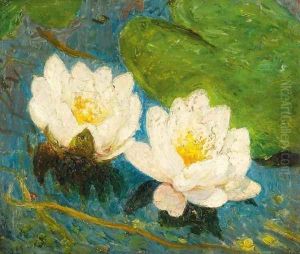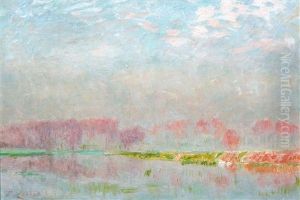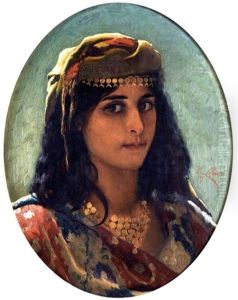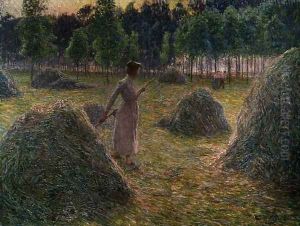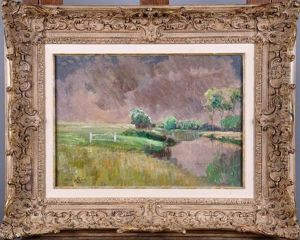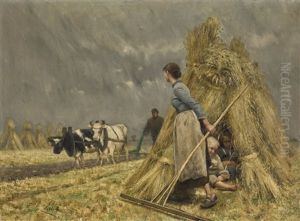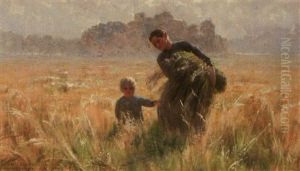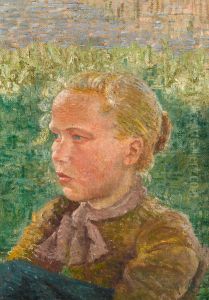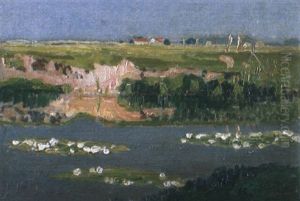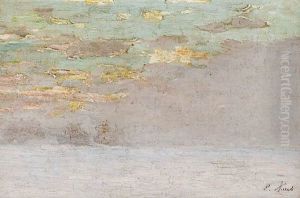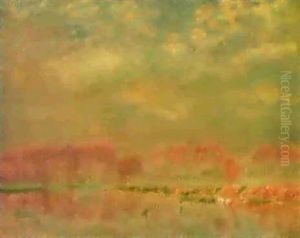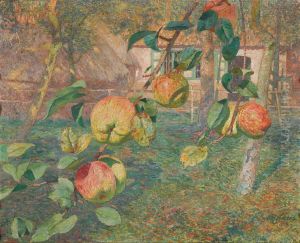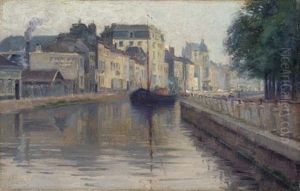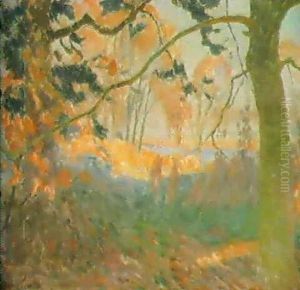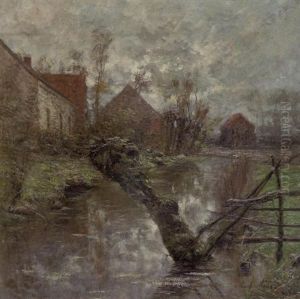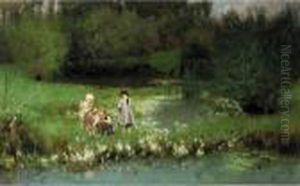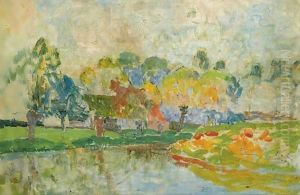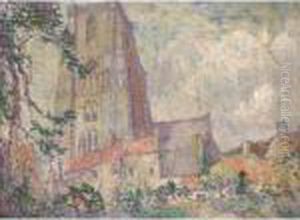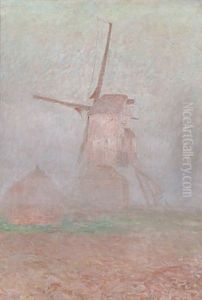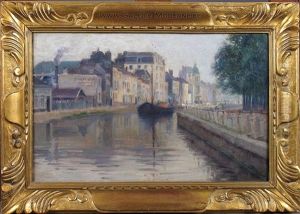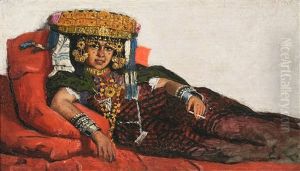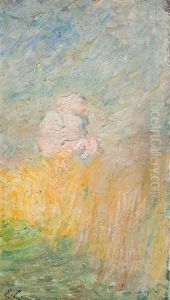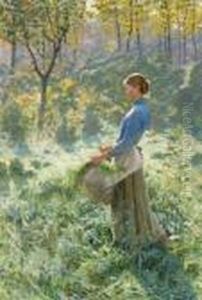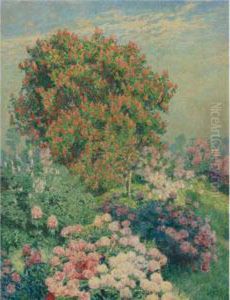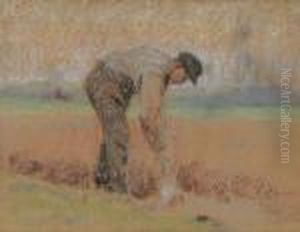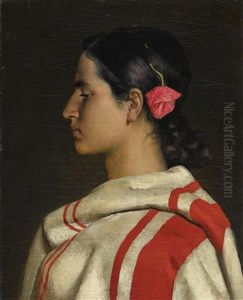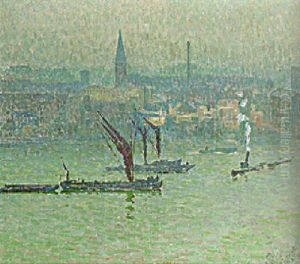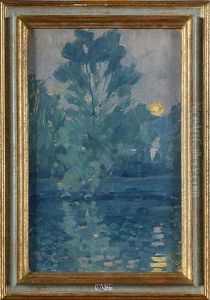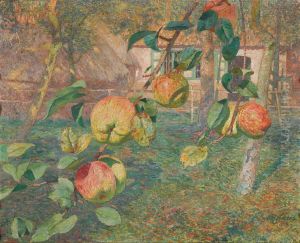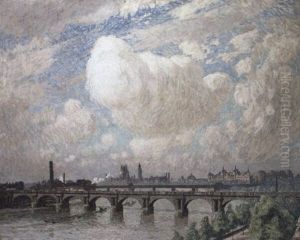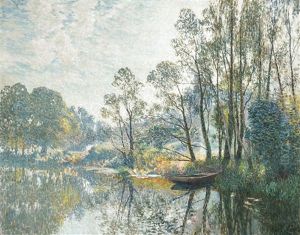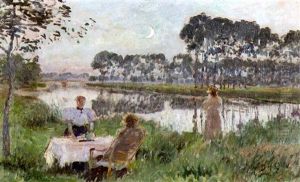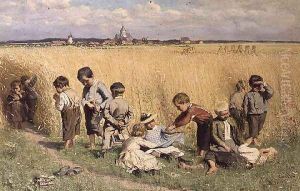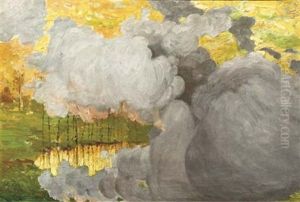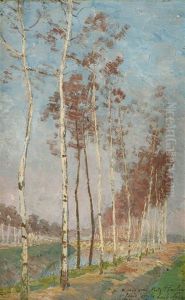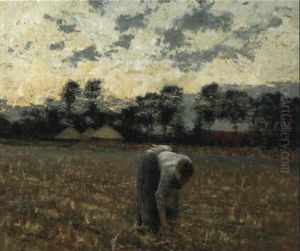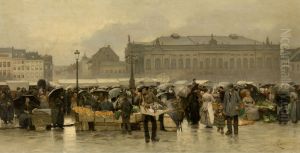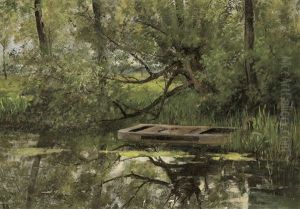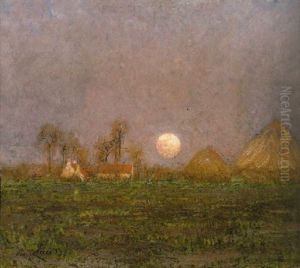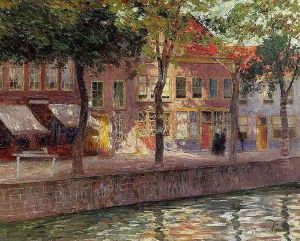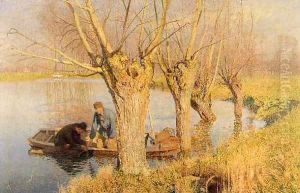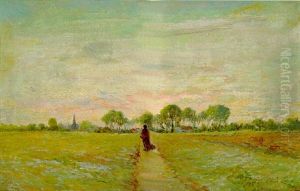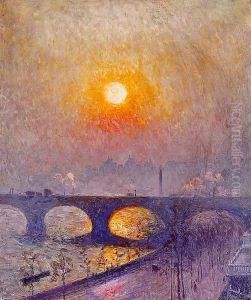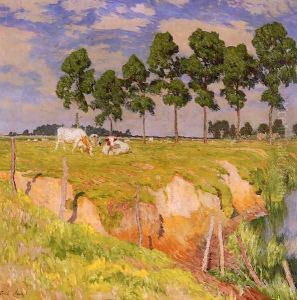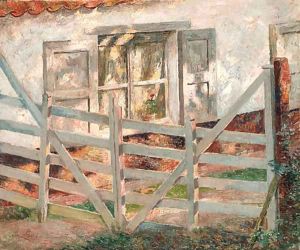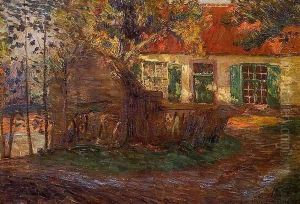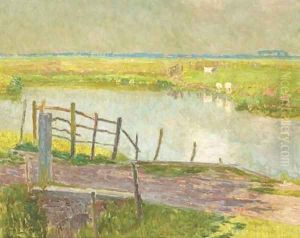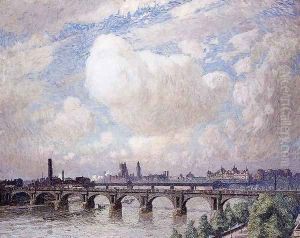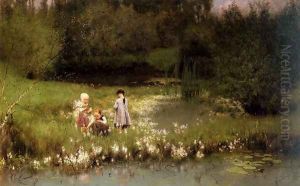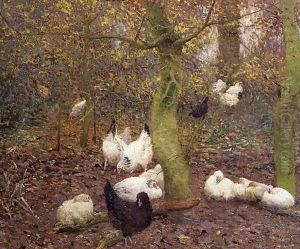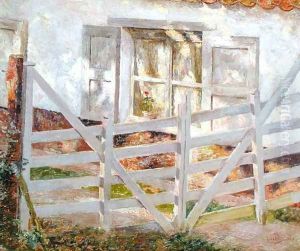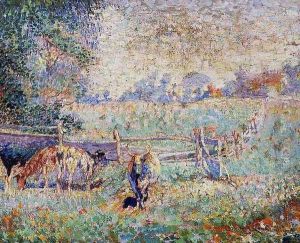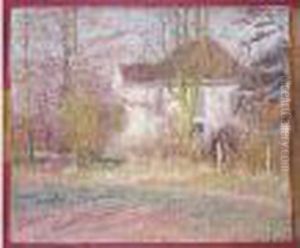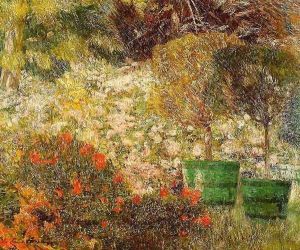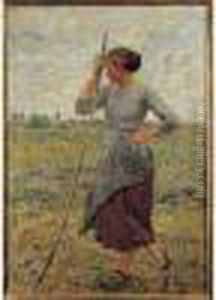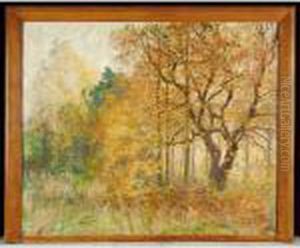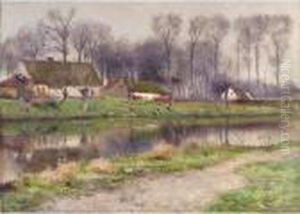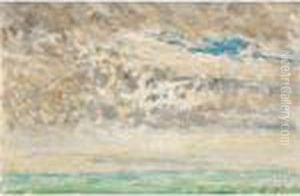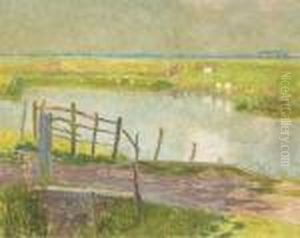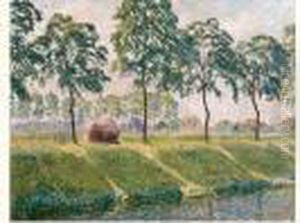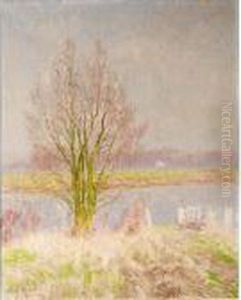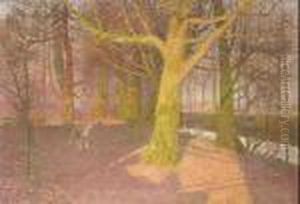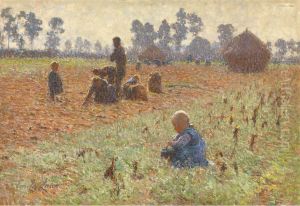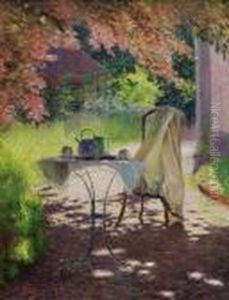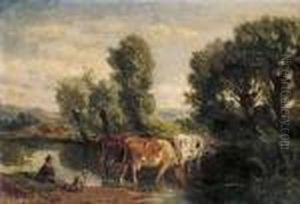Emile Claus Paintings
Emile Claus was a prominent Belgian painter, born on September 27, 1849, in Sint-Eloois-Vijve, a village in the West Flanders region of Belgium. He is widely recognized as a leading figure in the Belgian luminism movement, a variant of impressionism that emphasizes the effects of light on landscapes and scenes. Claus's early works were primarily realistic depictions of rural life, showing a keen observation of social realities and nature. However, his style evolved significantly after his exposure to impressionism during his visits to Paris in the late 19th century.
Claus's encounter with impressionism had a profound impact on his artistic direction. He adopted a brighter palette and a looser brushwork, focusing more on the interplay of light and color in his compositions. This shift in style is evident in his later works, which often depicted the landscapes of the Leie River, near his home in Astene, with vibrant light and lively colors. These paintings are characterized by a sense of immediacy and a dynamic representation of nature, reflecting Claus's fascination with the changing effects of light throughout the day.
In 1904, Emile Claus founded the Vie et Lumière (Life and Light) group, which was central to the luminism movement in Belgium. Through this group, he aimed to promote the luminist style, which was characterized by an emphasis on the depiction of light in a realistic yet poetic manner. Claus's work during this period is marked by a harmonious balance between realism and impressionism, showcasing his mastery in capturing the ephemeral qualities of light.
Claus's contributions to the art world were not limited to his paintings. He was also a mentor to many young artists and played a significant role in the development of modern art in Belgium. Despite the advent of World War I, which forced him to relocate to London for a period, Claus continued to paint and exhibit his work, further solidifying his reputation as a leading artist of his time.
Emile Claus passed away on June 14, 1924, in Astene, Belgium. Today, his work is celebrated for its vibrant luminosity and its pivotal role in the transition from traditional realism to modern impressionism in Belgian art. Claus's paintings are held in high regard and can be found in major museums and collections across Belgium and beyond, serving as a testament to his lasting impact on the art world.
